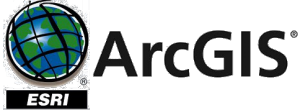This article is summarized and concluded from articles as follow:
(1) Making GIS Work in Forest Management by Manij Upadhyay, unpublished work.
(2) A Hierarchical Approach to Spatial Forest Planning by Ugo Feunekes and Andrew Cogswell, USDA Forest Service, Proceeding
(3) HCVF/A Identify Within Ecoregion; Integrating Conservation Planning into Regional Spatial Planning by Barano Siswa Sulistyawan, WWF Indonesia,
(4) Assessing participatory GIS for community-based natural resources management: claiming community forests in Cameroon by Michael K. McCall and Peter A. Minang, The Geography Journal Volume 171 No.(4) pages 283-306, 2010

Introduction
Integrating GIS into Forest Resources Spatial Management and Planning (1) – As Indonesia becomes the third highest biodiversity country, it is important for Indonesian to conserve its forest resources. Since, without any simultaneous conservation strategies and sustainable use of forest resources, all advantageous for nation development will be vanished no more than a few years. Concerns over the impacts of forest operations on the forest landscape have compelled a number of agencies to take initiatives to address these issues (Feunekes and Cogswell, 1993). The American Forest & Paper Association, for example, has taken a proactive approach by outlining guidelines for member forest companies to implement sustainable forestry practices (Wallinger 1995), many of which represent a fundamental change in how forest planning and operations are practiced (Feunekes and Cogswell, 1993). Spatial planning in managing products and its environmental services of forest has been extremely important because forest resources management activities deal with vast-scale area with different conditions and characteristics.
Spatial planning is often difficult to be established. There are problems that difficult to solve concerning to three reasons. First, most problems deal with a large extent of area. This, therefore, makes difficult to apply certain method that can overwhelm all problem spatially. Otherwise, as the second problem, forest management has become more complex as there are now multiple objective to attain, as well as multiple criteria and constraints to address (Warnecke et al., 2002) such as maximum harvest volume and in other hand allowable cut, biodiversity conservation, conservation of soil and water, and in the meantime, community welfare. This makes spatial approach should be developed matching more variables. Since forester have to deal with numerous objectives from a single patch of forest, a wide variety of spatial information is required and source of reliable data are a prerequisite in forest management (Bettinger and Wing, 2004). The availability of reliable data is partially becoming the third of most problems to solve.
To solve the problems, the use of GIS in processing and analyzing spatial data shall be beneficial in term of reducing complexity of field work, excessive budget need, and providing good management plan.
Remarks:
You can download the full paper in PDF at the end of the lecture series.
*Geo-information for Spatial Planning and Risk Management — Batch 6 — Faculty of Geography, Gadjah Mada University*
*Intended to fulfil Spatial Planning lecture task*